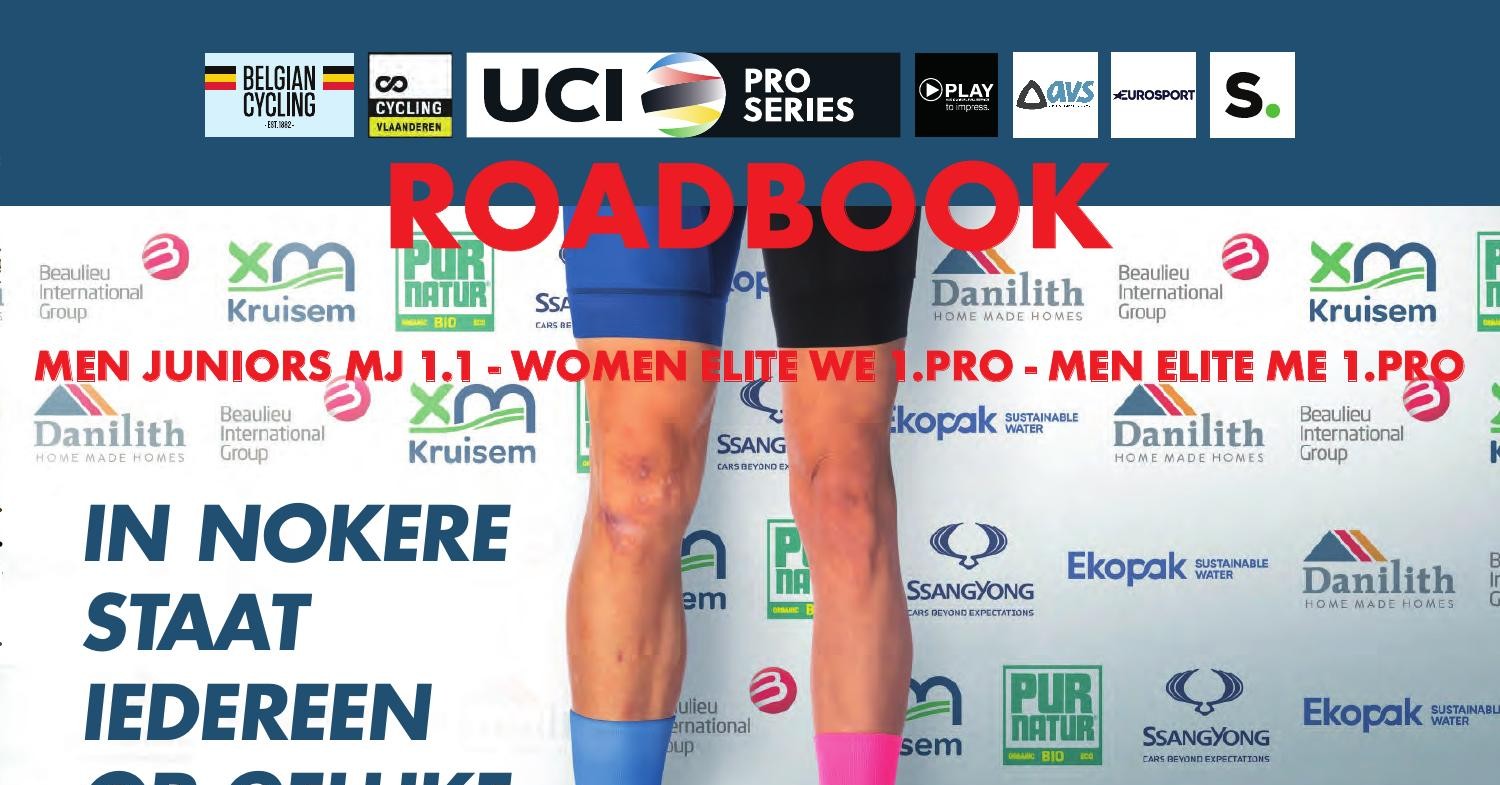The other Belgian sprinter-friendly semiclassic that often sees big crashes. At least this one has the route to provide moderately interesting racing after the broadcast has started. It's also a bit of a historical moment, with the prize money being equal for the men's and women's races.
Men's startlist
Women's startlist
Men's route
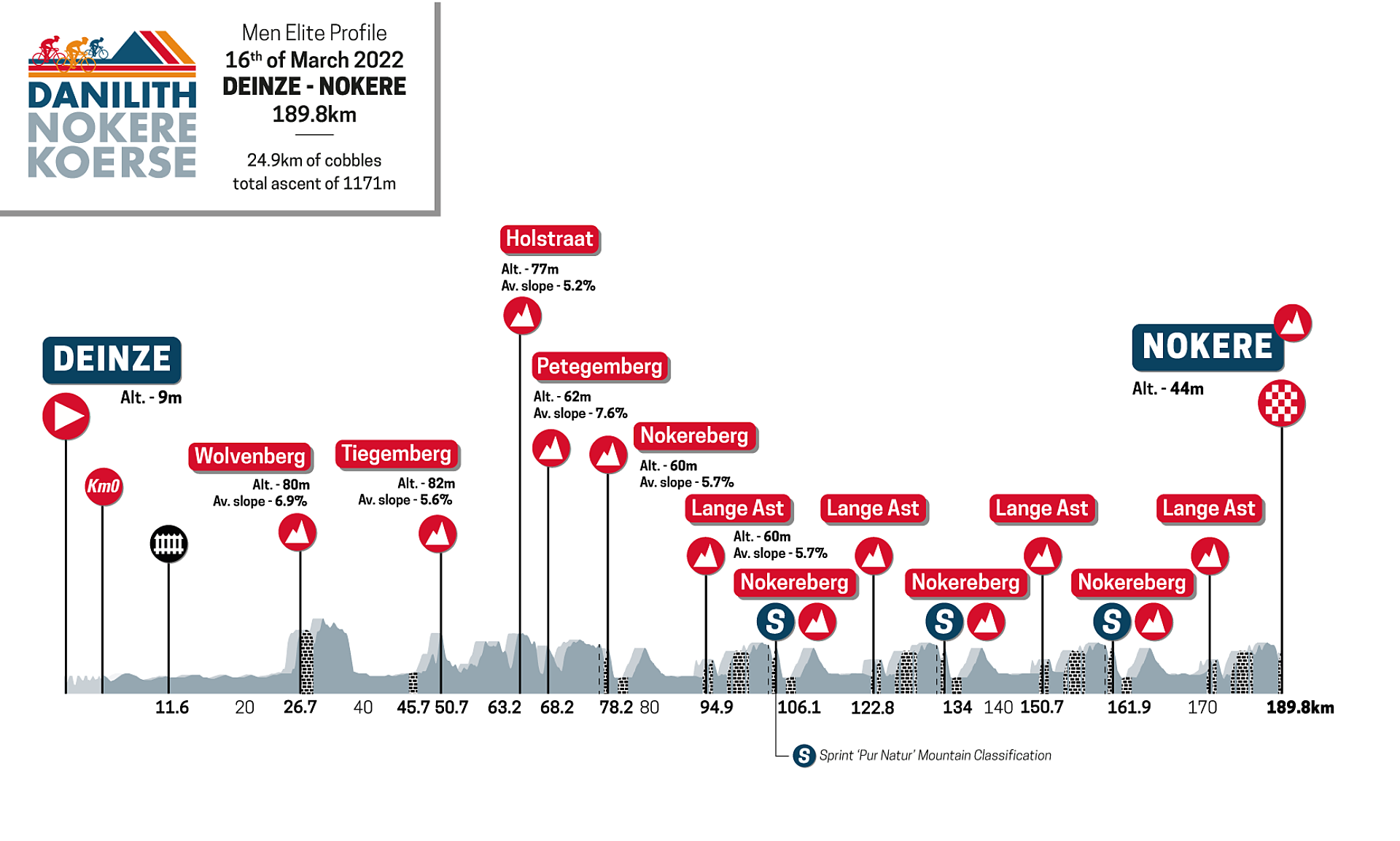

Women's route
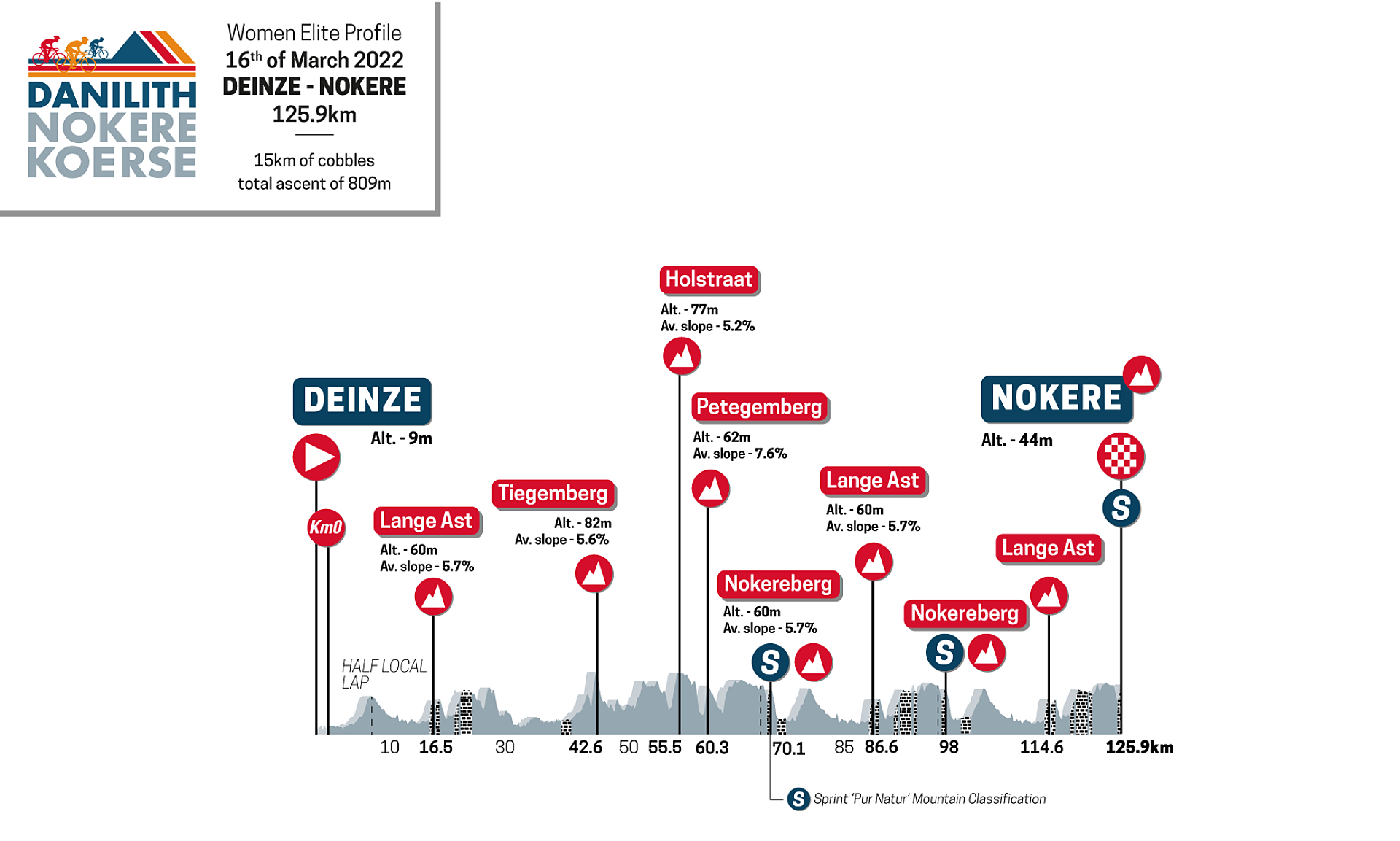
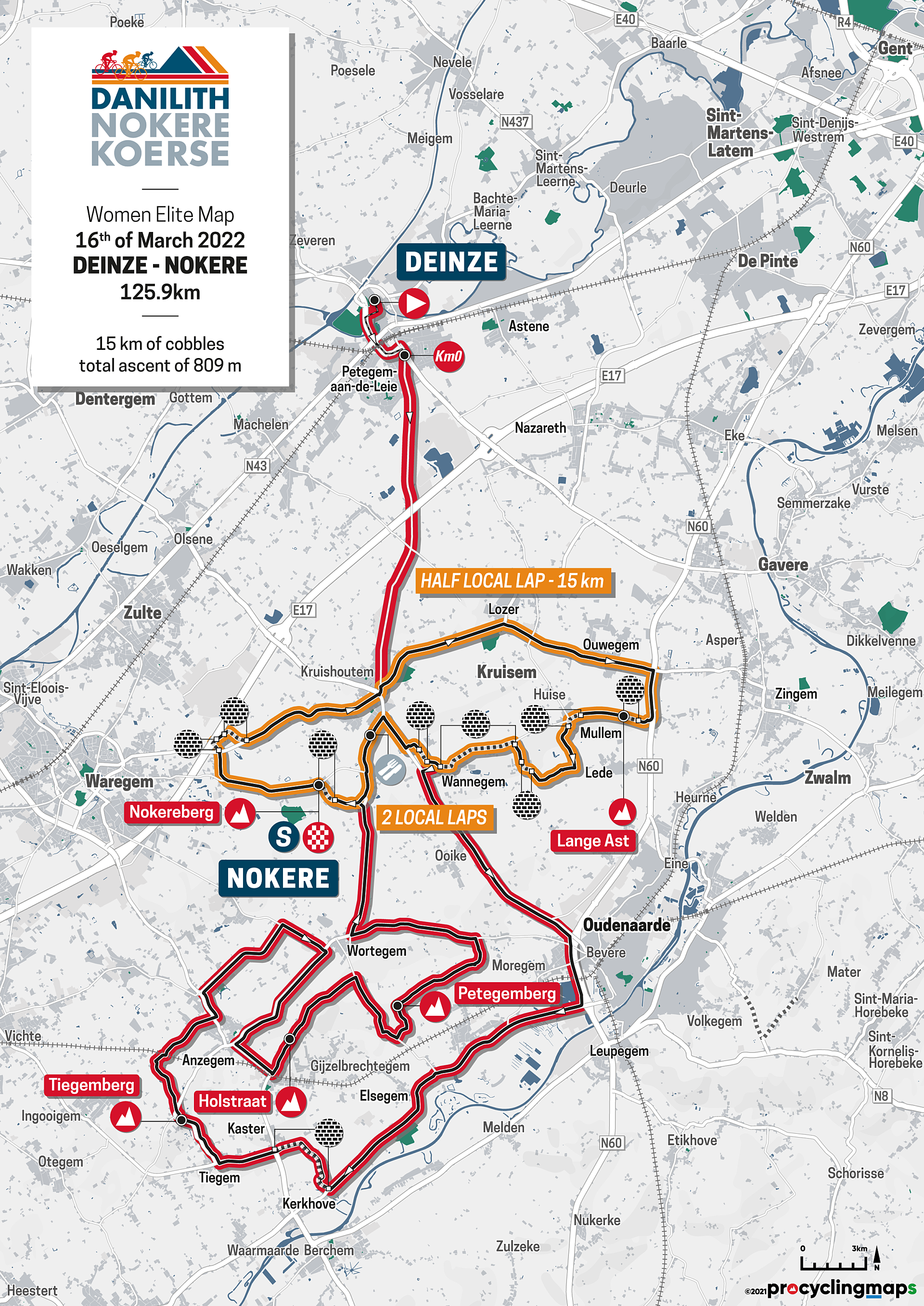
Final circuit

From the finish line, they first head to the cobbled section of the Herlegemstraat, the final difficulty of Dwars door Vlaanderen. Don't expect any rough cobbles at this race, it's all pretty manageable. This is followed by a long flat section on relatively wide roads, one of the key reasons why (in the men's race) most sprinters usually survive this finale. Either way, eventually they turn onto the Lange Ast, on cobbles between 250 and 700 metres on the profile below.
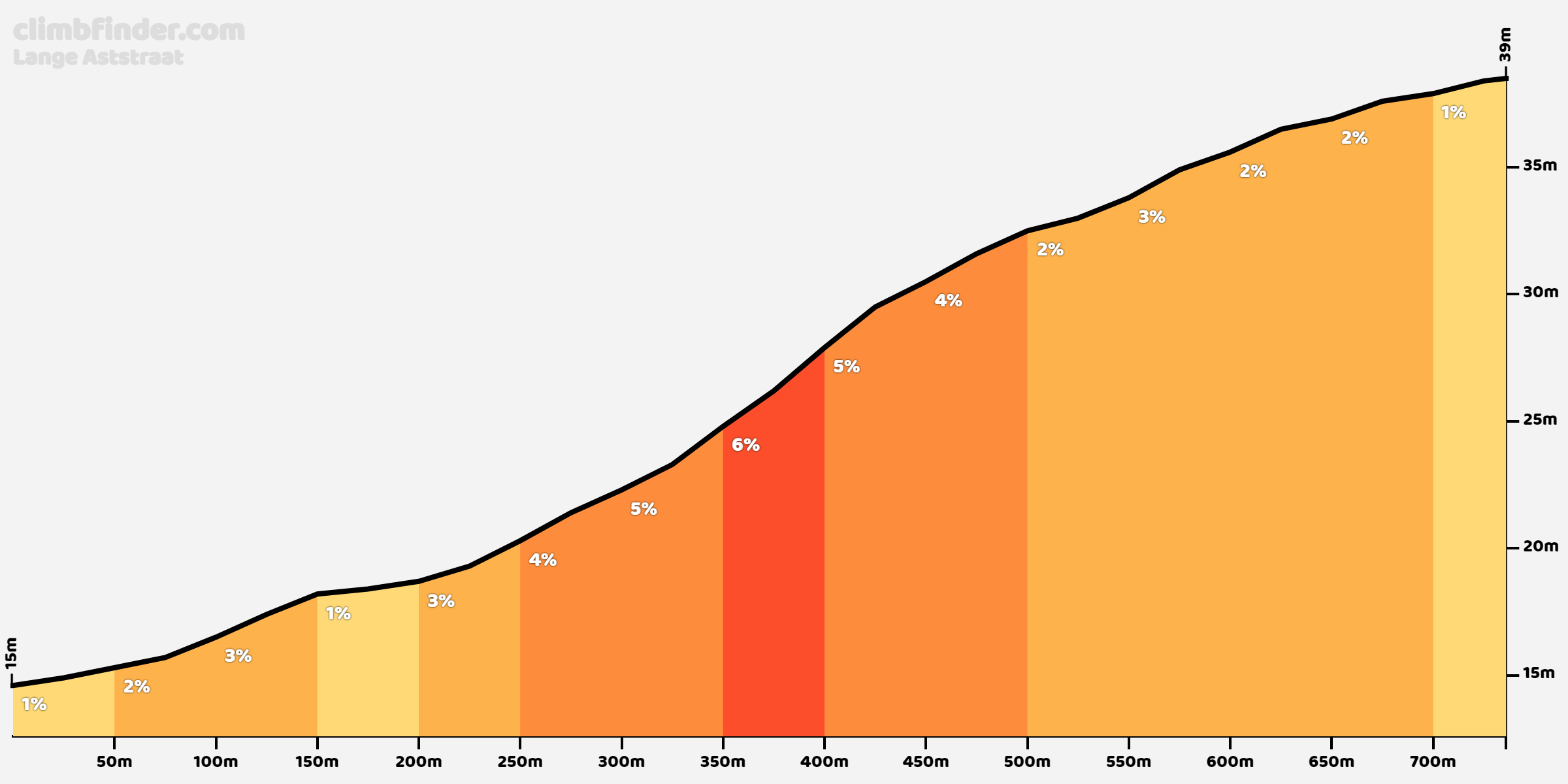
From here, cobbles are almost the norm, but they're usually easy, also by Flemish standards. First those in Huise, then in Lede (between 250 metres and 450 metres on the profile below)...
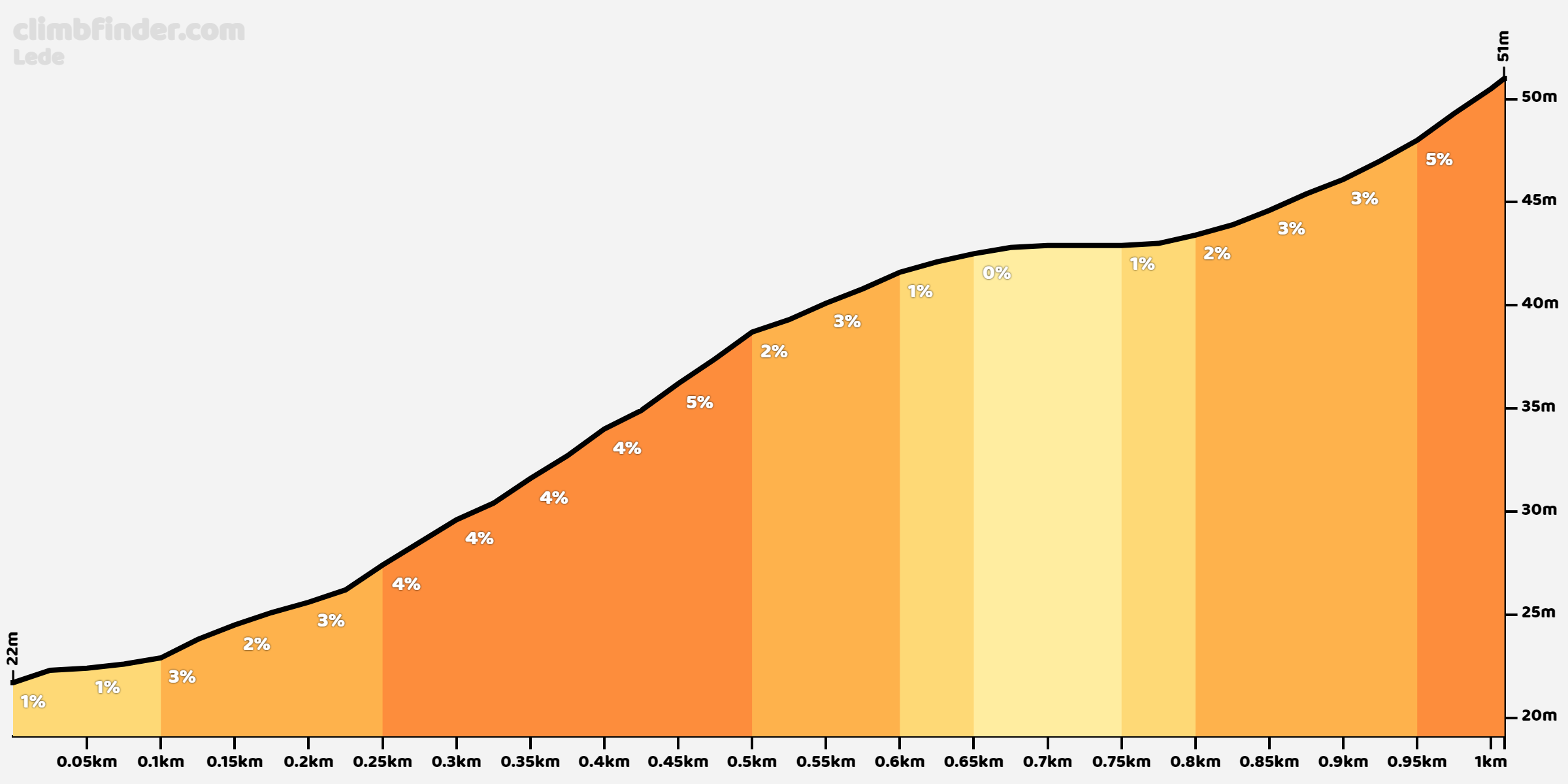
...then the longer Huisepontweg, followed almost immediately by the very short, but very narrow Hoevenstraat. After this it's a return to paved roads, narrowing inside the final 2 kilometres as they approach Nokere. The road dips downhill in the final kilometre (700 metres at about 3% - a key factor for crashes, recall the time we briefly thought Mathieu van der Poel's spring was over after being escorted by ambulance upon going down here, only for him to win Dwars, Brabantse Pijl and Amstel) to the foot of the cobbled Nokereberg, the traditional finish of this race. Ignore the elevation marking for the finish line, you can see from the y-axis that it's wrong.
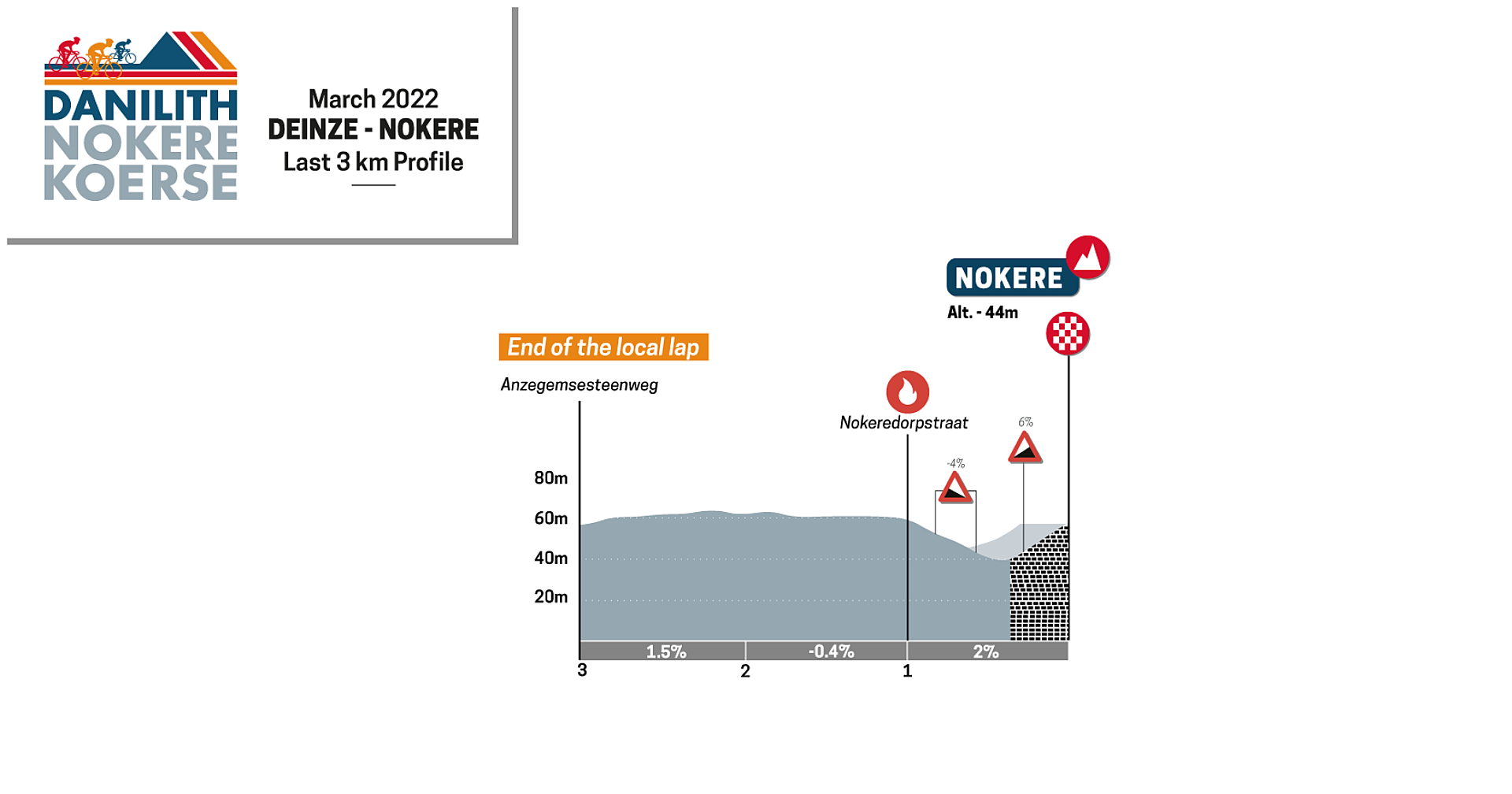
Nokereberg:
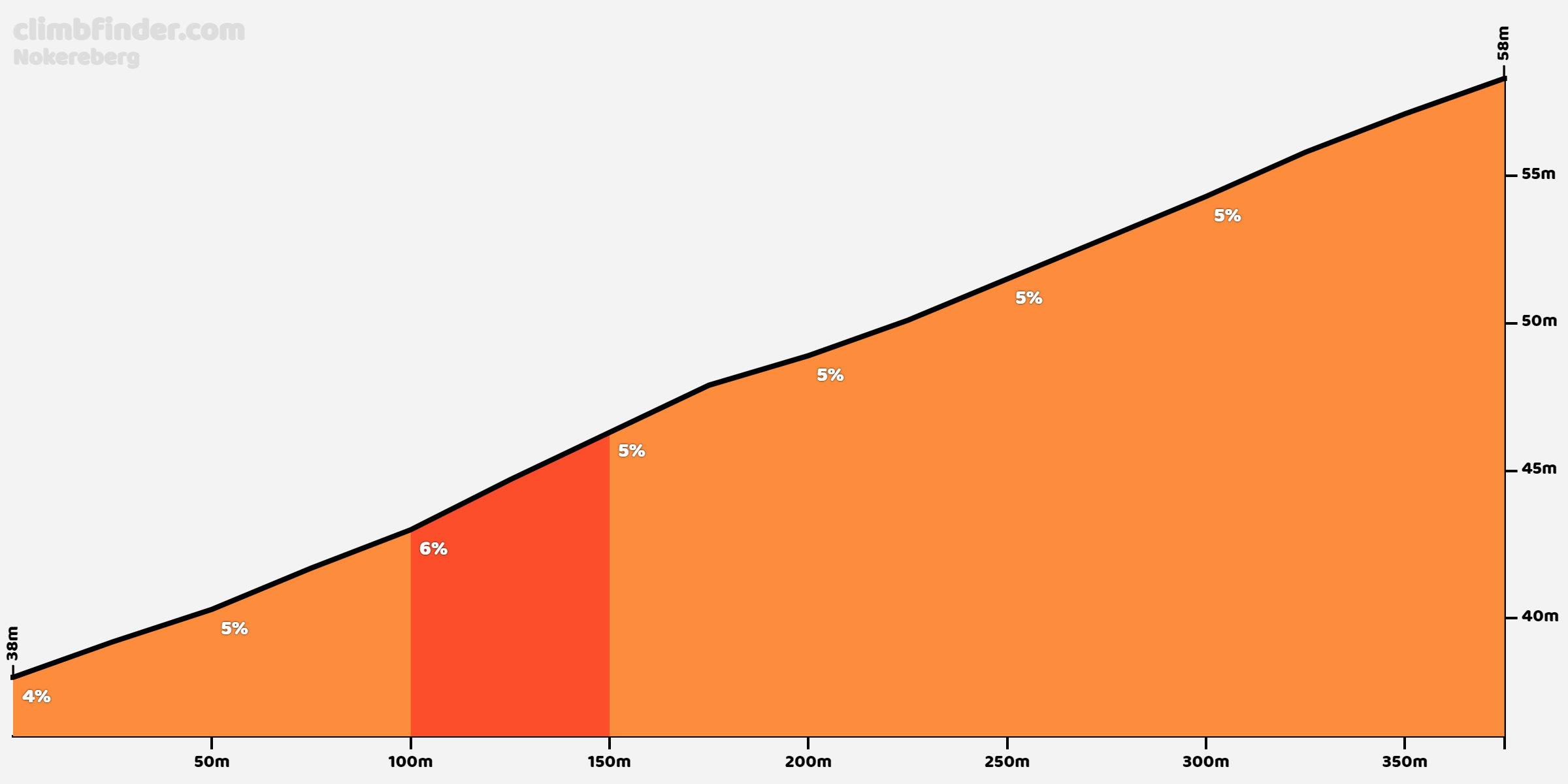
Men's startlist
Women's startlist
Men's route


Women's route


Final circuit

From the finish line, they first head to the cobbled section of the Herlegemstraat, the final difficulty of Dwars door Vlaanderen. Don't expect any rough cobbles at this race, it's all pretty manageable. This is followed by a long flat section on relatively wide roads, one of the key reasons why (in the men's race) most sprinters usually survive this finale. Either way, eventually they turn onto the Lange Ast, on cobbles between 250 and 700 metres on the profile below.

From here, cobbles are almost the norm, but they're usually easy, also by Flemish standards. First those in Huise, then in Lede (between 250 metres and 450 metres on the profile below)...

...then the longer Huisepontweg, followed almost immediately by the very short, but very narrow Hoevenstraat. After this it's a return to paved roads, narrowing inside the final 2 kilometres as they approach Nokere. The road dips downhill in the final kilometre (700 metres at about 3% - a key factor for crashes, recall the time we briefly thought Mathieu van der Poel's spring was over after being escorted by ambulance upon going down here, only for him to win Dwars, Brabantse Pijl and Amstel) to the foot of the cobbled Nokereberg, the traditional finish of this race. Ignore the elevation marking for the finish line, you can see from the y-axis that it's wrong.

Nokereberg:



